 |
 |
 |
| |
Complete Protection against Repeated Vaginal Simian HIV Exposures in Macaques by a Topical Gel Containing Tenofovir Alone or with Emtricitabine
|
| |
| |
Reported by Jules Levin
CROI Feb 7-12, Montreal, Canada
Charles Dobard*1, U Parikh1, S Sharma1, M-E Cong1, J Smith1, G Garcia-Lerma1, F Novembre2, R Otten1, T Folks1, and W Heneine1
1CDC, Atlanta, GA, US and 2Yerkes Primate Res Ctr, Emory Univ, Atlanta, GA, US
Background: Globally HIV continues to spread, primarily through heterosexual sex. In the absence of an effective vaccine, topical gels containing single or combination ARV drugs may provide a prevention option against HIV acquisition. Pre-exposure prophylaxis (PrEP) studies in the macaque model showed that oral dosing with the reverse transcriptase inhibitor, tenofovir (TFV), can be protective but a combination of TFV and emtricitabine (FTC) was required to increase efficacy. To identify and evaluate the most effective modality for topical ARV gels, we used a repeat-challenge macaque model that closely resembles human transmission. Here we compared the efficacy of gels containing TFV alone or in combination with FTC in preventing vaginal simian HIV (SHIV) infection.
Methods: We performed 20 intravaginal SHIVSF162p3 challenged twice-weekly with a low-dose (10 TCID50) inoculum. Female pigtail macaques were assigned to a no gel arm (n = 2), placebo gel arm (2% hydroxyethyl cellulose [HEC]; n = 9), TFV gel arm (1% TFV; n = 6), or combination gel arm (5% FTC and 1% TFV; n = 6). We applied 3 mL of gel vaginally 30 minutes before intravaginal challenge. Infection was monitored by serology and polymerase chain reaction (PCR) amplification of SHIV gag sequences from plasma. Systemic drug absorption was determined by measuring plasma drug levels 30 minutes after gel application using liquid chromatography-mass spectrometry (LC-MS).
Results: Of 11 macaques in the control arms, 10 were infected after a median of 4 challenges; 2 of 2 in the no-gel arm and 8 of 9 in the placebo gel arm (range, 2 to 11 challenges). In contrast, 6 of 6 macaques receiving TFV gel and 6 of 6 macaques receiving FTC/TFV gel remained uninfected after 20 challenges, demonstrating that both TFV alone and when combined with FTC provided very significant protection (p <0.005; Fishers exact test). Low levels of FTC (median, 67 ng/mL) or TFV (median, 22 ng/mL) were consistently detected in plasma at the time of virus challenge.
Conclusions: We show that application of a TFV or FTC/TFV gel consistently protects from vaginal SHIV infection. The low levels of drugs in plasma 30 minutes after gel application suggested rapid drug absorption with relatively higher levels of drug remaining in the genital tissues. The complete protection achieved by TFV gel in this model identifies a very effective strategy for human trials and suggests that combinations of topical drugs may not be required for highly effective prophylaxis.
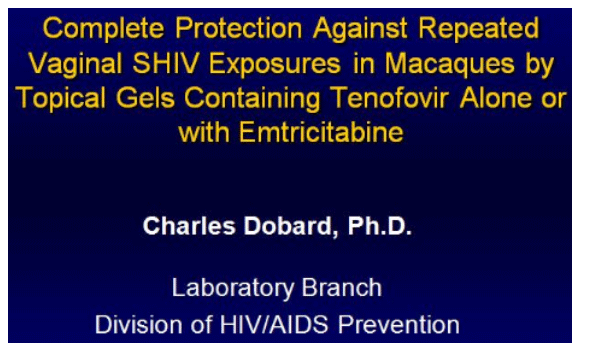
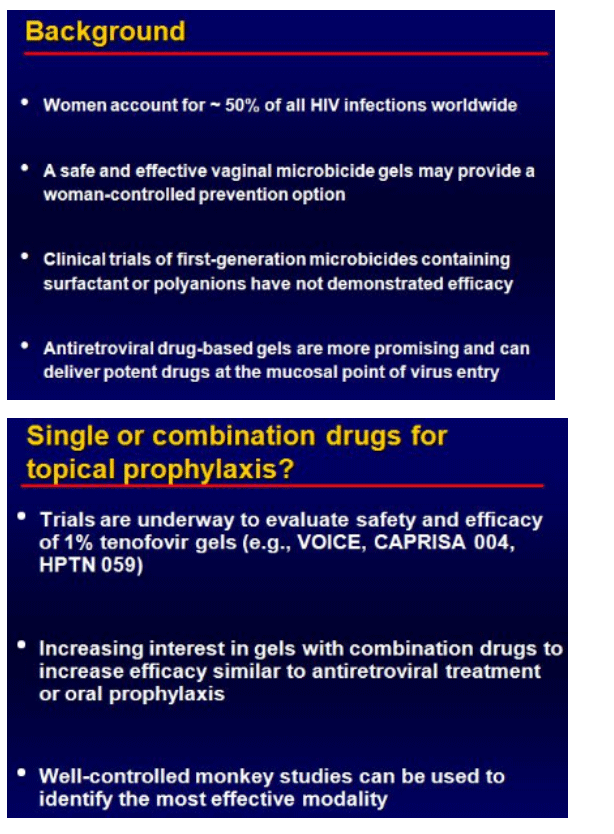
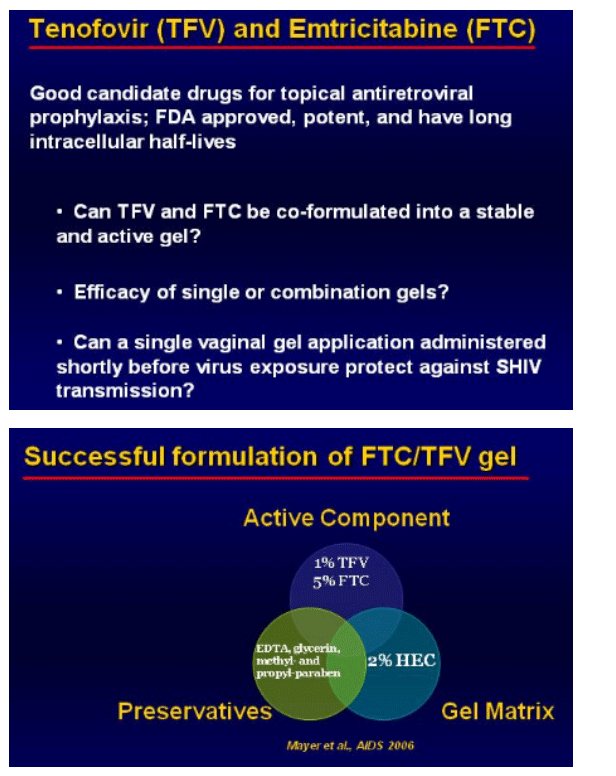
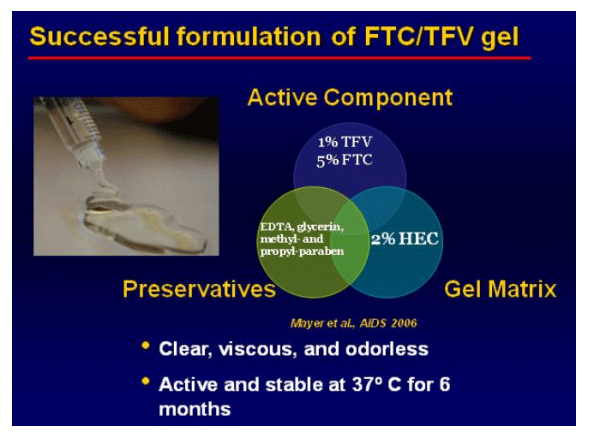
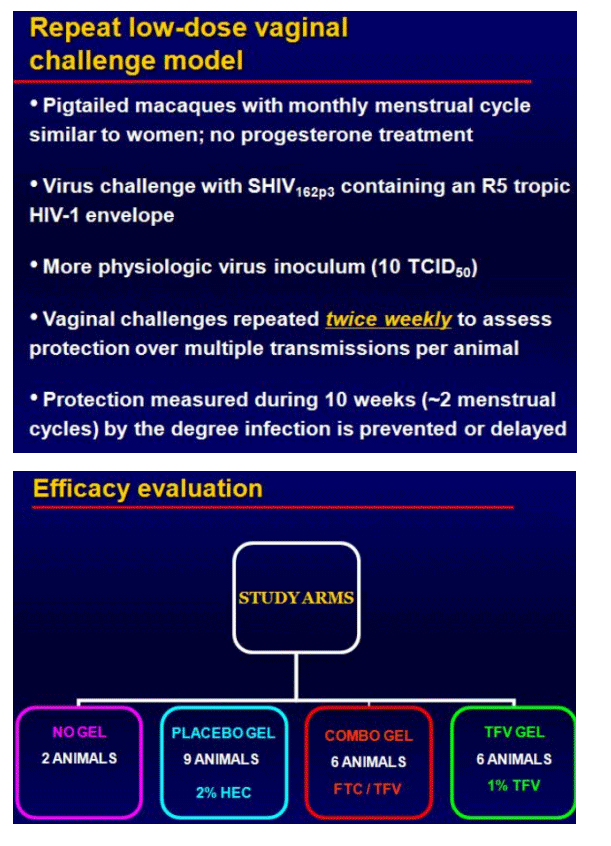
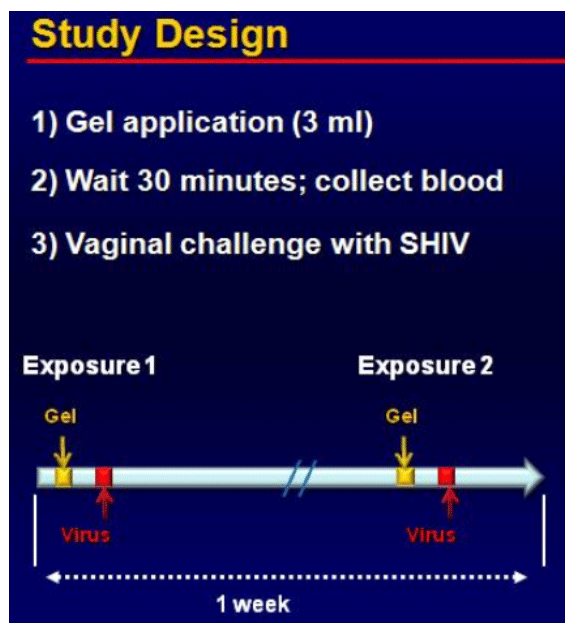
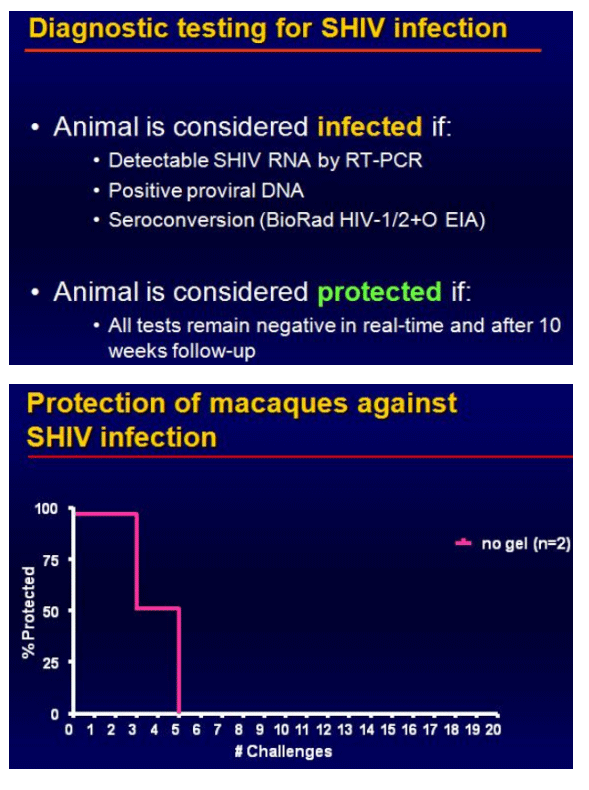
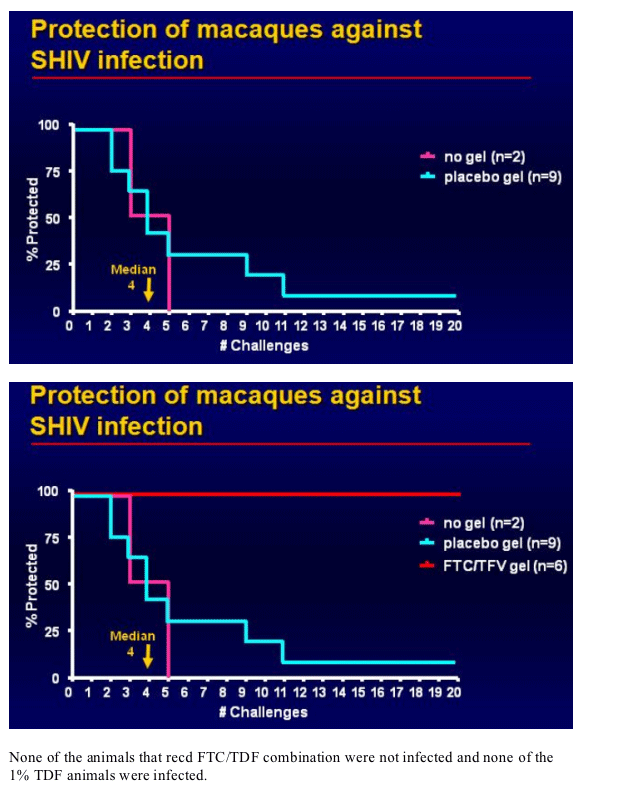
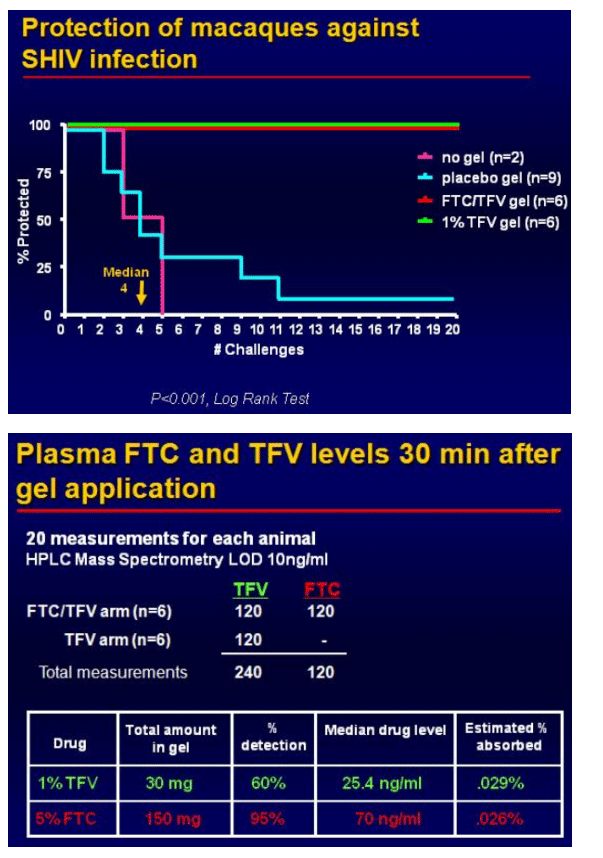
None of the animals that recd FTC/TDF combination were not infected and none of the 1% TDF animals were infected.
SUMMARY & CONCLUSIONS
1% tenofovir alone or in combination with FTC conferred complete protection against repeated vaginal exposures; high efficacy can be achieved by gels with single drugs
single gel application administered shortly before virus exposure is sufficient for high protection; daily gel application may not be needed
FTC and TDF were detected in plasma 30 minutes after application suggesting rapid drug absorption; the more frequent FTC detection is likely explained by the hgiher dose
Detection of TFV in plasma is not predictive of protection (rapid but low amount absorbed): "TDF was not detected in plasma 40% of time"
Model highlights the high efficacy of this prevention strategy and identifies modalities for human trials
|
| |
|
 |
 |
|
|